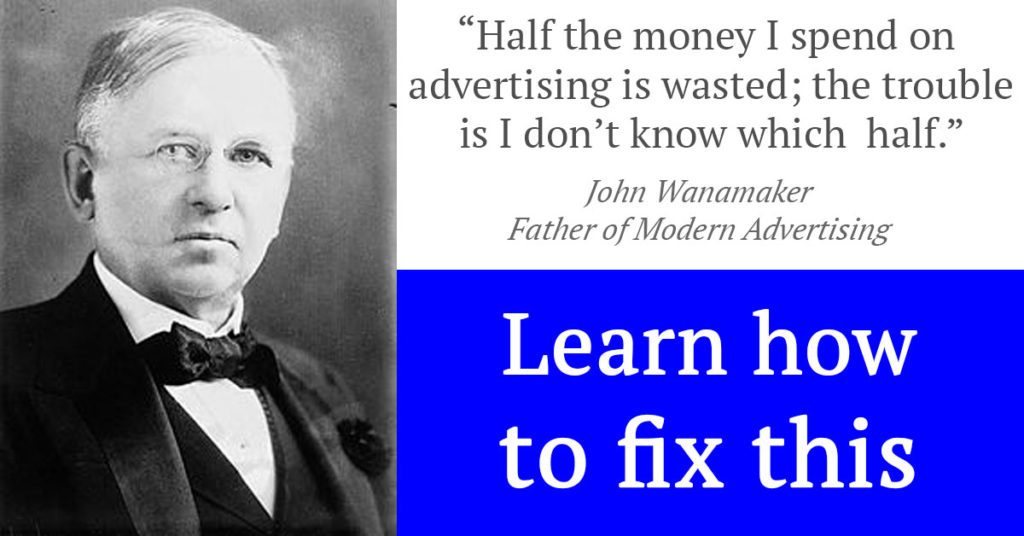
John Wanamaker is a legend in marketing and in his day, finding wasted advertising was impossible. The world has changed and the good news is his statement is no longer entirely true.
Today, we can measure things that were impossible in Mr. Wanamaker’s day. This is especially true in digital advertising. Google Analytics gives us a measurement that digs deep into this problem and it’s called the Bounce Rate.
Bounce Rate is the percentage of traffic that loads one page and then leaves your site with no other interaction. When traffic acts like this, then it is a reasonable argument that the advertising investment was wasted. Reasonable YES, absolutely correct NO.
A major flaw exists in the way this measurement is taken. Here is a bounce scenario where the bounce is NOT wasted traffic. A person goes to your site, sees your phone number, picks up the phone and calls you. This is a homerun and the reason you advertise but it is also a page visit that Google would consider to be a bounce.
Let me explain the tracking problem. Google Analytics gets the starting time on-page from the page load but is only able to calculate the time spent on this page when the next page is loaded. In the case of a bounce, there is a start time but no end time, so it reports as zero. Even with Call Tracking Google Analytics does not associate the visit with the call. To solve this problem, Google Analytics needs to see some type of action such as another page loaded for what is known in Google Analytics as an Event. It is not uncommon to modify your Click-to-Dial Hyperlinks to fire off an on-click event, this would be the next action ensuring that the visitor who made the phone call did not count as a bounce. This is not a perfect solution but does moves toward making the bounce rate more relevant.

In Search, drill down to the keyword to get clues of where this is coming from. The tools you have to improve this includes the keyword, search terms, and ad copy. The search terms are a bit of an enigma because you know the keyword bounced but not which search term bounced. Negative keywords are a powerful tool however you have to be careful because they can be a silent killer of your account.
Ad copy might surprise some but it can be a very effective tool. Most of the time your thinking on ad copy is “How do I get the Click?” but another way to think about copy is as a traffic filter to stop unwanted and poor quality clicks from happening. We had a client that provided software development services and their projects started at $10,000 and went up from there. When the ads were first written, by another agency, they were tuned to get the click and they did. This resulted in lots of traffic but the quality of the traffic was horrible. With a good understanding of what the client needed, we changed the ads to include the project size. This dropped the quantity of calls and raised the quality of calls and the client was pleased with the change in calls. They got fewer calls but they were the right calls.

When you tighten the keywords, it drives volume down and quality up. Follow the math and this will move the conversion rate, the ultimate goal. What you do not want to do in this process is reduce the budget to take the savings. In marketing, it is easy to fall into the “Saving yourself out of business problem.”
In the Google Display Network, the process involves a higher degree of geek magic. This is because getting bounce rate to a level of detail that you can adjust is hard. It often requires designing the ad groups to separate pools of traffic. This is more magic and less math but you can squeeze improvement out of display. If you have a $1,000 budget with a 50% bounce rate and improve that bounce rate to 40%. This will save you $100 a month, which is $1,200 per year. If you would like to stop wasting advertising dollars give us a call and let’s talk.


